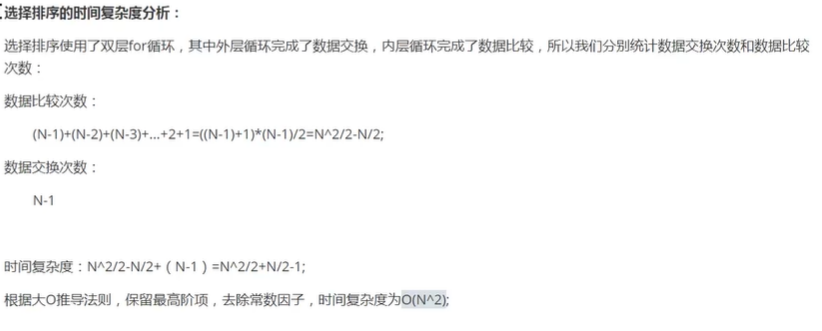选择排序:合适的元素放在合适的位置
1、每一次遍历的过程中,都假定第一个索引处的元素是最小值,和其他索引处的值依次进行比较,如果当前索引处的值大于其他某个索引处的值,则假定其他某个索引处的只为最小值,最后可以找到最小值所在的索引。
2、交换第一个索引处和最小值所在的索引处的值
选择排序api实验:
package demo02.sort;
public class Selection {/*** 对数组a中的元素进行排序*/public static void sort(Comparable[] a){for (int i = 0; i < a.length-1; i++) {//定义一个变量,记录最小元素所在的索引,默认为参与选择排序的第一个元素的位置int minIndex = i;for (int j = i+1; j < a.length; j++) {if (greter(a[minIndex],a[j])){minIndex = j;}}//交换最小元素所在索引minIndex处的值和索引i处的值exch(a,i,minIndex);}}/*** 比较v元素是否大于w元素*/private static boolean greter(Comparable v,Comparable w){return v.compareTo(w)>0;}/*** 数组元素i和j交换位置*/private static void exch(Comparable[] a,int i,int j){Comparable temp;temp = a[i];a[i] = a[j];a[j] = temp;}
}package demo02.test;
import demo02.sort.Selection;
import java.util.Arrays;
public class TestSelection {public static void main(String[] args) {//原始数据Integer[] a = {4,6,8,7,9,2,10,1};Selection.sort(a);System.out.println(Arrays.toString(a));}
}运行结果:

选择排序时间复杂度分析:


)

)



)








的依赖?)


